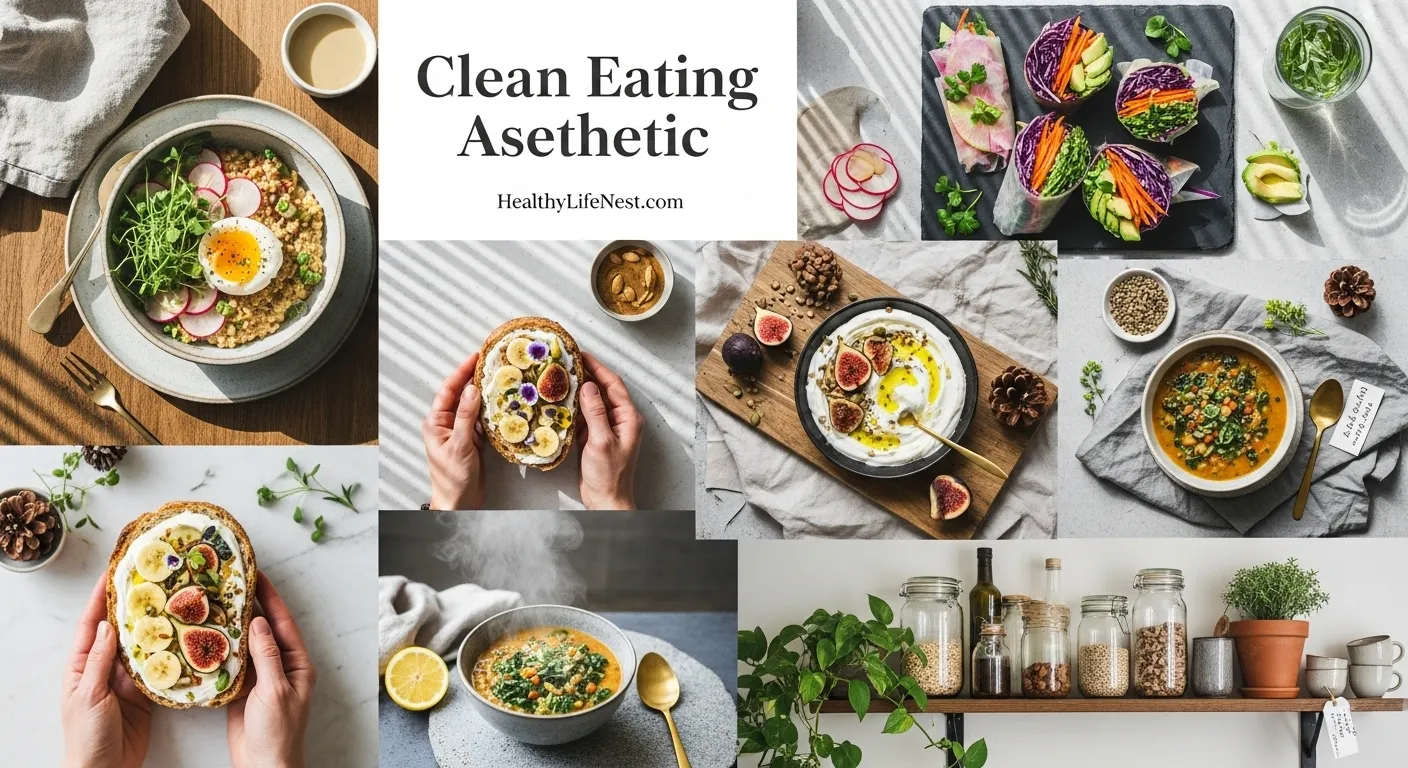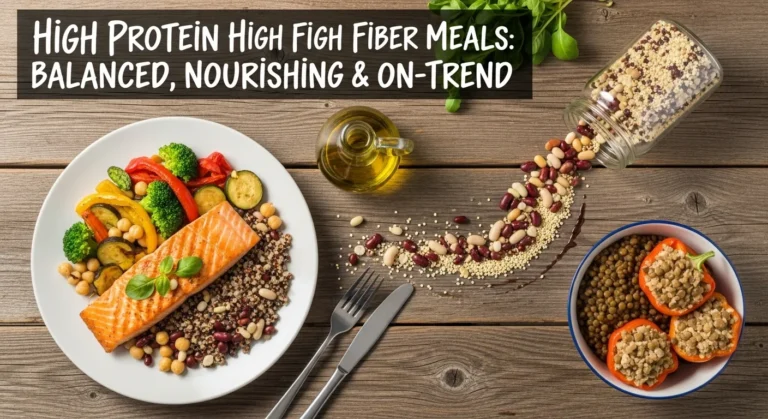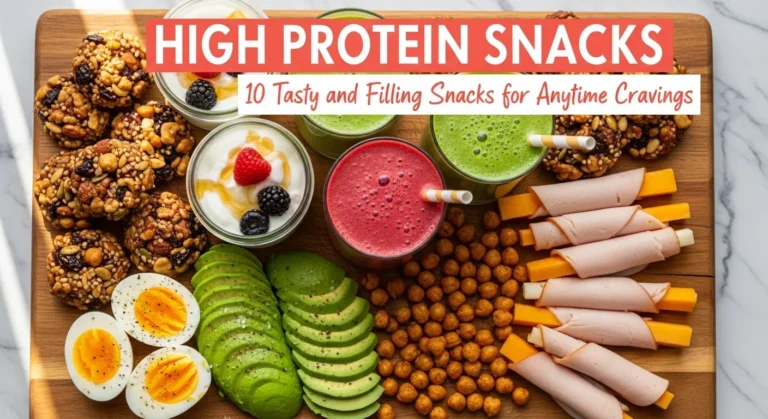The Clean Eating Aesthetic: A Calm, Nourishing Lifestyle That Looks as Good as It Feels
Clean eating aesthetic isn’t just about food—it’s a full experience. It’s the beauty of simple meals, natural colors, and peaceful moments around food. This trend blends wellness, minimalism, and visual joy. You don’t need expensive ingredients or a professional kitchen to enjoy it. Clean eating starts with what you choose, how you plate it, and how it makes you feel.
What Is Clean Eating Aesthetic?
This style means choosing real, whole foods and presenting them in a fresh, relaxed way. Think soft lighting, simple table settings, and food that feels nourishing. It’s about slowing down and appreciating what’s on your plate—without clutter or complication.
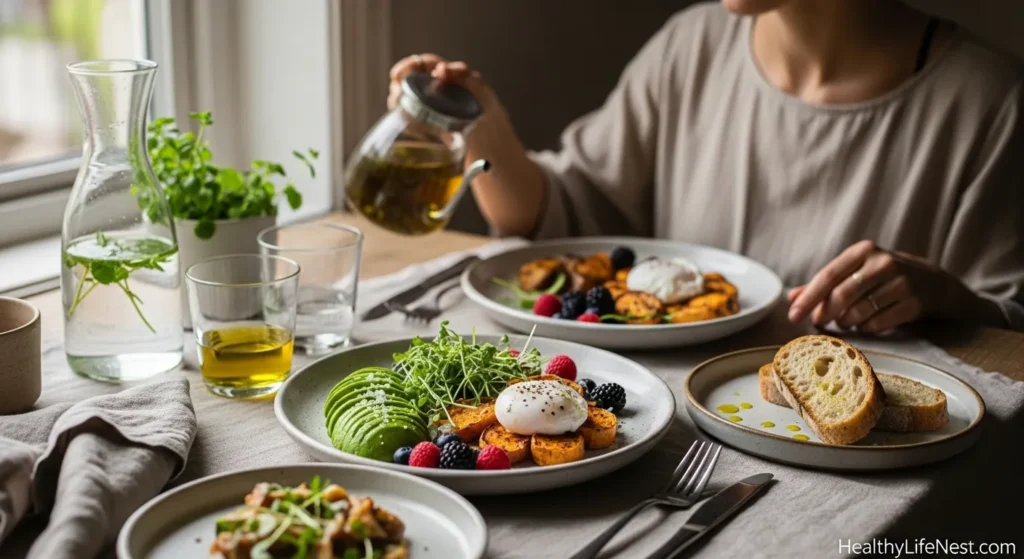
Key Elements of the Trend
- Neutral tones: white plates, wood boards, beige linens
- Real food: fruits, vegetables, grains, nuts, seeds
- Calm energy: natural light, soft shadows, no distractions
- Simple scenes: hands holding bowls, toast on wood, scattered herbs
What’s Trending in Clean Eating Aesthetic?
Here’s what’s catching eyes and minds across Pinterest and beyond:
- Savory breakfast bowls: oats, greens, soft-boiled egg, tahini drizzle
- Color-balanced plates: warm oranges (sweet potato), cool greens (kale), earth tones (lentils)
- Yogurt boards: thick yogurt spread on wood with figs, seeds, olive oil
- Minimal lunch wraps: rice paper filled with rainbow veggies and microgreens
- Dressed toast: nut butter, cacao nibs, banana slices, edible flowers
- Herbal water jugs: clear glass filled with mint, citrus, or cucumber slices
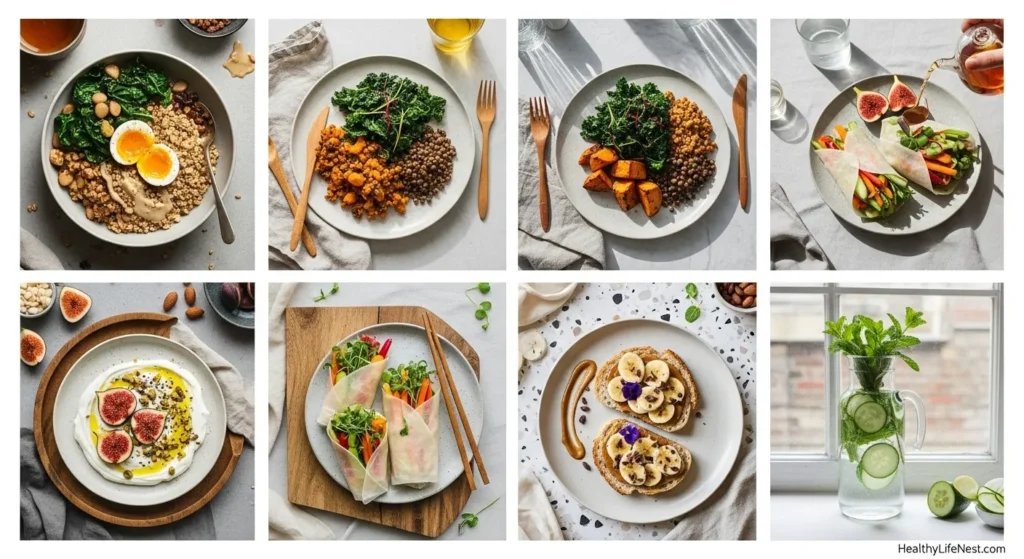
Tip:
Start by clearing your counter. Lay a linen cloth or a wooden board. Use just one plate or bowl and let colors of your food speak for themselves. This makes the meal feel more special without adding anything artificial.
Do:
✔ Choose whole, minimally processed foods
✔ Use glass, ceramic, and wood instead of plastic
✔ Plate your meals with space—not crowded
✔ Add a plant or a candle to your table
✔ Eat near natural light when possible
Don’t:
✘ Fall for all “low-fat” or “diet” labels—read the ingredient list
✘ Skip meals to cut calories—it backfires long-term
✘ Fear carbs—whole grains, fruits, and legumes are good for you
✘ Rely too much on protein bars or packaged snacks
✘ Eat in front of screens—mindful eating helps digestion
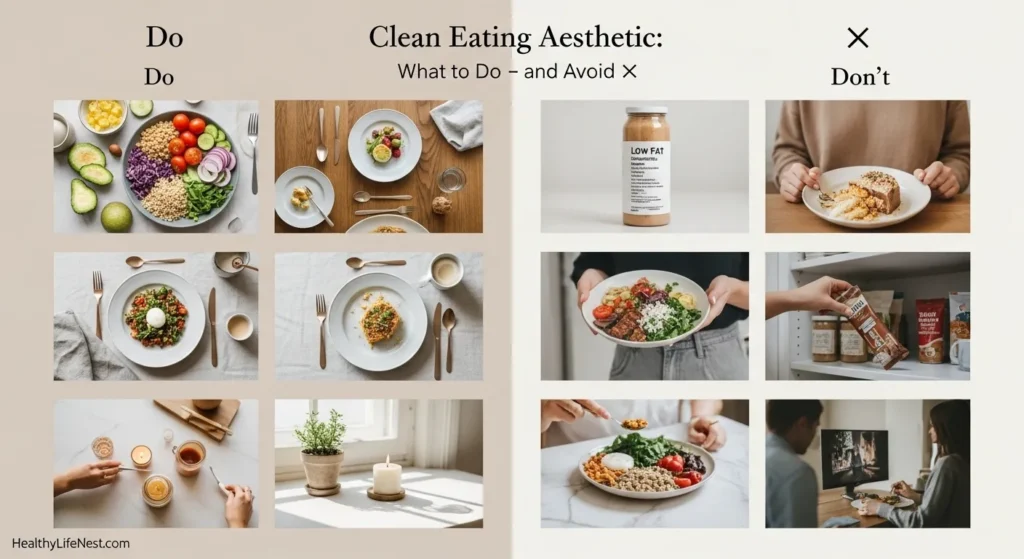
Why It Matters
This aesthetic builds a relationship with food. It teaches you to enjoy textures, colors, and the rhythm of eating. The calm look influences how you feel—slower, more mindful, more satisfied.
Quote:
“Food should calm the mind, nourish the body, and look like a small piece of art you made just for yourself.”
A Quick Note on Style
It’s not about perfection or strict rules. Even a slice of bread with olive oil and tomato can feel elegant when served with care. The focus is on freshness and peace, not pressure.
The Origins
The clean eating aesthetic gained popularity in early wellness communities, blending Scandinavian simplicity with Mediterranean food traditions. It grew as people began sharing calm, nourishing food moments on Instagram and Pinterest—not polished, just peaceful.
Clean eating aesthetic is here to stay. Not as a rulebook, but as a mindset: eat simple, eat real, and let your food space feel like a retreat. Even the smallest meal can be beautiful when you treat it with intention.

